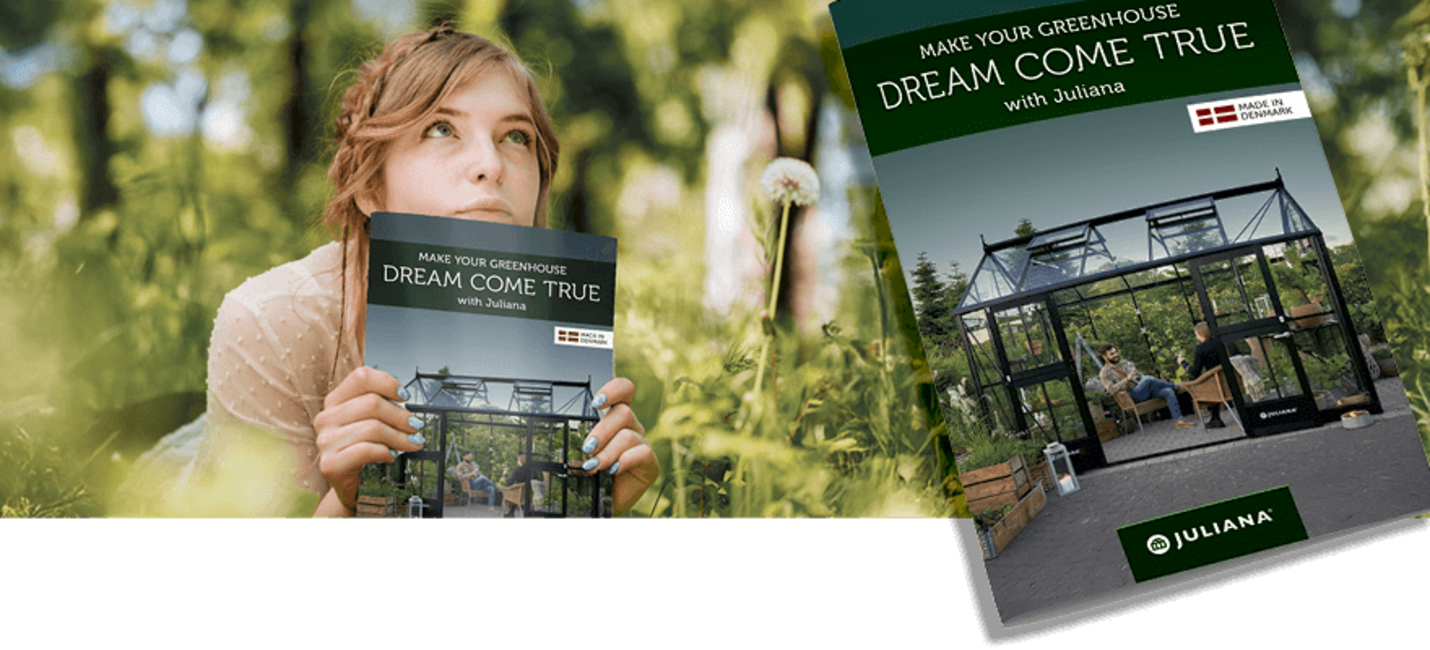Written by Spirekassen 11 May 2022 12:34
Know your greenhouse
Text and photo: Christine Wiemann
Did you know that your greenhouse is unique? Even though your greenhouse has been bought from a manufacturer that produces many of the same models, your greenhouse is still one of a kind. Your neighbour may have the same greenhouse model as you, but the climate in your greenhouse is unique. What makes it unique depends on how it is placed regarding the four corners of the world.
Location matters
If your greenhouse is oblong, the best solution is to place it towards North and South, with each end facing North and South. This way, when the sun rises in the East, the greenhouse will be heated quickly. At noon, when it is warmest, the smallest side of the greenhouse will be facing South. And when the sun sets in the West, it will make use of the last warmth from the sun. But not all greenhouses are placed like that. Moreover, other things matter such as trees that shade.
Sunlight in the greenhouse
When the sunlight hits the glass of the greenhouse, part of the light will also be reflected outwards. Approx. 15-20% of the sunlight will either be absorbed or reflected in the glass. The rest will pass through the glass and get inside the greenhouse. This is the light that the plants can use to make photosynthesis. The amount of light that actually gets inside to the plants, depends on a couple of things. The slopes of a Juliana greenhouse model are not that steep. The reason for this is that more light can pass through the glass throughout the year. Also, the narrower a greenhouse is, the more light there will be.
Great differences
All greenhouses have different microclimate zones. One corner will be warm and dry, and another will be moist. You may be able to see it yourself, but if not, you can download a compass on your smartphone and find out how your greenhouse is positioned in relation to North and South. The part that is facing the South will be the warmest area and the one facing the North will be the coldest.
But does it matter?
Yes, it matters. If you know the climate zones in your greenhouse, you can arrange your plants more strategically.
South-facing corner
Cucumber plants and melons can be planted in the south-facing corner. These plants love the warmth and they can withstand the direct sunlight at noon. To prevent pests and fungal infections, you can shower the plants once a day including underneath the leaves. If you love basil and chilli, the South corners are a great place for these.
Aubergines can withstand temperatures of up to 40 degrees Celsius, and therefore, this plant will also thrive in the South corner.
Avoid having tomatoes in the warmest part of the greenhouse. Tomatoes like the warmth, but there is a limit. If it is too hot for the tomatoes, they will start losing their blooms and not bear fruit. You may also experience that the tomatoes will get blossom rot. Should you choose to have tomatoes in the warmest area anyway, get the sorts that are less likely to get blossom rot such as cherry tomatoes.
North-facing corner
Tomatoes are a must in the North corner. Even though it is facing North, there are still plenty light for cultivation of tomatoes. Often in the summer, there are more sunlight than the plants can absorb, and tomatoes do not tolerate temperatures over 25 degrees Celsius.
The same go for peppers, which too do not like when it is too hot. And for the pepper to produce fruit, the temperatures at night should be low. Therefore, the pepper should also be placed in the northern part of the greenhouse.
Pests
The warm and dry corners are often the corner that will get pests. Aphids will appear by the end of March, when its predators are not active.
During summer the spider mites will appear on cucumbers, and that may happen quickly and be fatal for your cucumber plant. Spider mites love the warm and dry climate in the South corner.
Fungal diseases
In the summer you may see mildew. It is often on cucumbers by the end of summer. Mildew thrives in warm and dry climates, and therefore, you may see it in the South-facing corner of your greenhouse.
Solution for the warm corner
Daily shower your plants with a garden sprayer. Use clean water.
Solution for the cold corner
Grey mould is a difficult type of fungus. This type of fungus thrives in humid climates, which is often in the northern part of the greenhouse.
Keep the door open for a few days, prune the tomatoes and weed the soil– then you won’t have a problem with the mould.
Tips
- Look for pests every week
- Often the pests will appear in the south-facing corner of the greenhouse
- Use water for pest control
- Ventilate throughout the day and night in the summer season
- Place your plants strategically according to the climate zones
Special thanks to Bent Løschenkohl for being my sparring partner.







